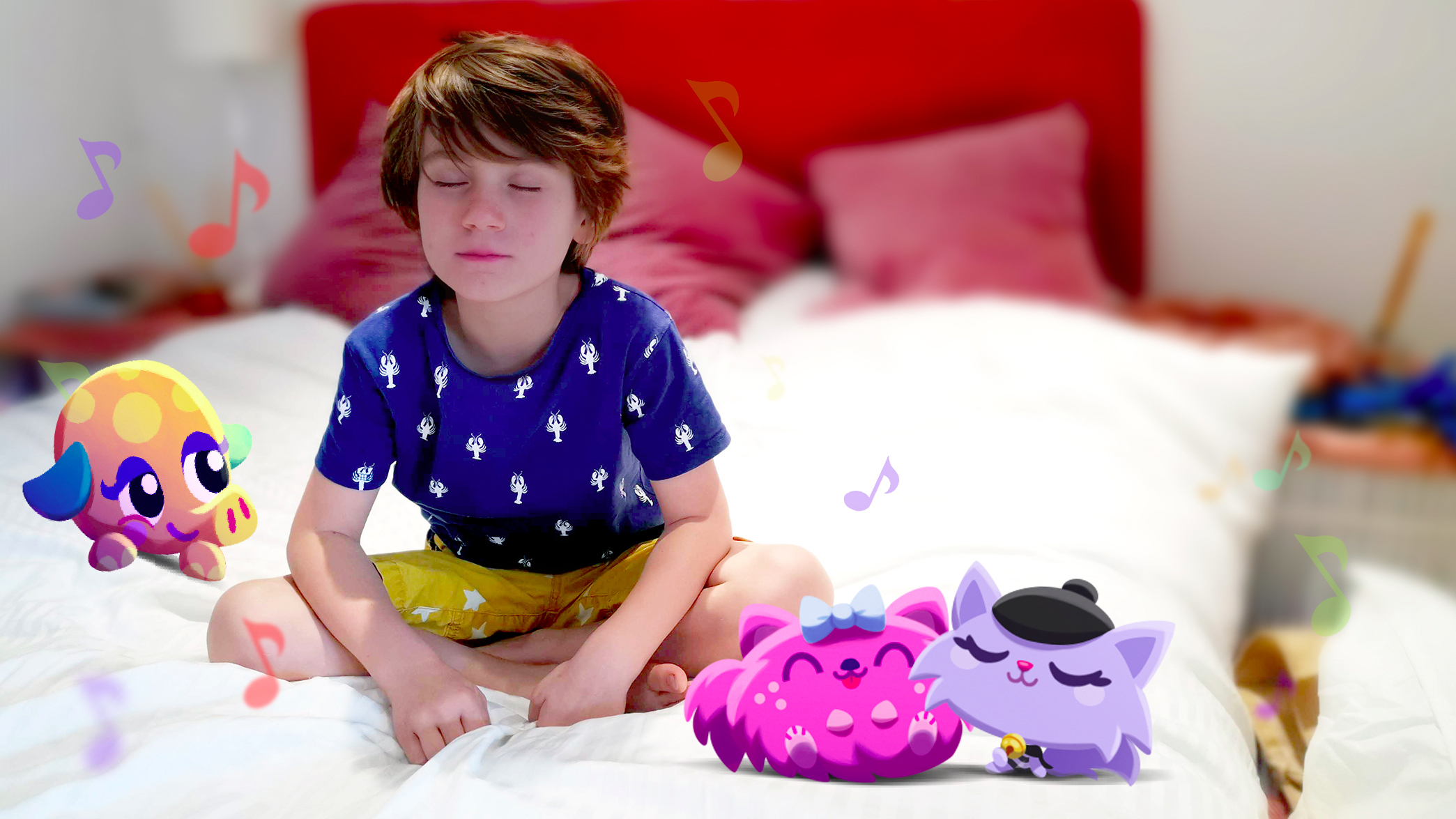
A Simple Guide to Mindfulness for Kids
Mindfulness is popping up in child-specific media more and more each day but there’s still so much fogginess around what it actually means, why it’s so important, and how to get our kids actively practicing it. It can be a confusing world to navigate, so we’ve created a guide to introducing mindfulness to kids.
How do you explain mindfulness to kids?
Simply put, mindfulness means focusing your attention on one single thing and becoming completely present and in the moment. It means clearing your mind of clutter and distractions so you can slow down and step into a fully aware state. By practicing mindfulness, your kids can learn to take their time and understand all of their thoughts, feelings, and sensations.
Practicing mindfulness is important for children because it teaches them to understand why they feel, instead of just what they feel, and helps them to better understand and control their emotions.
Is mindfulness good for kids?
From improved mental health to better situational awareness, mindfulness has direct and indirect benefits on kids’ wellbeing. Here are a few of the positive effects of practicing mindfulness at a young age:
- Increase focus and awareness, which helps kids with areas of life like school
- Manage stressful situations and reduce anxiety by remaining calm
- Improve patience and minimize rushed actions
Ultimately, being mindful helps our kids live happier and healthier lives.
How do I begin practicing mindfulness with my kids?
According to the New York Times, children of all ages can benefit from mindfulness, however by the age of four children are able to learn mindful skills they can use on their own. Given the focus on slowing down and being in the present moment, it’s no wonder that meditation is one of the most effective ways for young kids to start practicing mindfulness.
Meditation is the act of calming the mind, practicing presence, and relaxing the body. It’s widely known as one of the most beneficial activities for any age, which is why getting our little ones started early can help them live more balanced and healthier lives.
Thrive Global shares that some benefits of meditation for kids are:
- Improved sleep
- Better emotional self-control and understanding
- Reduced stress and anxiety
Meditation allows us to focus inward and simply slow down.
What are some mindfulness exercises for kids?
Making mindfulness fun is a great way to introduce your little ones to the practice of mindful living.
Talk about emotions
Understanding emotions can be difficult, especially as a child. Sit down with your little one and go through some standard emotions — anger, happiness, love — and have them describe how they make them feel. Do they think of a color? Do they feel their face getting warmer? Can they visualize a place that helps represent the emotion?
Cloud gazing
Another way to practice focus and descriptiveness is through cloud gazing. Lay with your little one and watch the clouds pass by in the sky. Can they make out any shapes? Do the shapes remind them of anything specific? Do they change as they cross the sky? This allows them to slow down and focus on one specific thing, strengthening their mind and resting their body.
Balloon game
We all know the balloon game; blowing up a balloon and running around to tap it and make sure it doesn’t touch the ground. To help your children slow down while still practicing focus, have them pretend the balloon is actually a bubble. No sharp movements or powerful hits. No sprints or dramatic jumping. If the balloon is seen as a bubble, only gentle movements are allowed to ensure the “bubble” doesn’t pop.
How do I teach my child meditation?
Mindfulness through meditation is a great way for kids to unwind from a busy day and begin to calm their bodies and minds for a restful night of sleep. Here are a few ways to teach children how to get started.
Listen to your heart
Find a quiet place and have your little one lie down and place a hand over their heart. Tell them to find their heartbeat and focus on how it feels. Does it seem fast or slow? Can they keep count of how many times it beats in a minute? This activity allows them to slow down and become more relaxed and connected with their body.
Deep breathing
Deep breathing is one of the quickest ways to calm our bodies and minds. Have your little one breathe in for a set amount of time (typically 3 seconds) and then breathe out slowly (typically 3 seconds). Having something visual to focus on can also help with controlled breathing. Simply place one of their stuffed animals on their tummy and have them watch it rise and fall as they take a deep breath in and out.
Guided meditations
Guided meditations can be a great tool for kids to de-stress. It allows their minds to empty their minds and keep their bodies still. One of the most popular guided relaxations is known as the body scan. This is when your child lies down and closes their eyes, then squeezes every muscle in their body, tensing up for a few seconds before releasing. After releasing, have them focus on how they feel from the bottom up. First on their toes, then their knees, their hips, their arms, and so on. Have them scan each part of the body, relaxing the muscles, and focussing on the sensation. This exercise allows them to also be more connected with their body while practicing presence.